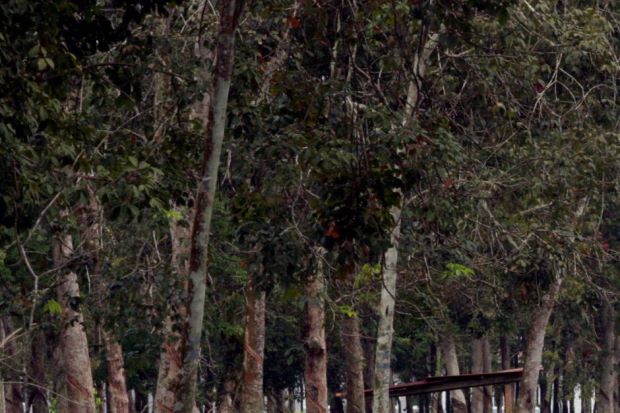KUALA LUMPUR: The Government will introduce a new initiative to arrest the declining rubber production, the Malaysian Rubber Board said.
Its director-general, Datuk Dr Mohd Akbar Md Said, said the new technology comes with a cluster concept with a vertical integration approach to curb further fall in rubber production and the model is expected to be ready by November.
He said the vertical integration approach model would enable the rubber upstream and downstream sectors to be combined together.
 “We will encourage smallholders to have a small processing plant that can process up to 10 times its capacity per day. This will encourage them to bring the production into the supply chain.
“We will encourage smallholders to have a small processing plant that can process up to 10 times its capacity per day. This will encourage them to bring the production into the supply chain.
“We believe with the introduction of this new technology, the rubber production will not go below what it is today. We do believe (of seeing) an increase in production, but not so soon.
“(Hence), the technology will reflect a better production next year,” he told reporters on the sidelines of the National Rubber Economic Conference 2016 in Kuala Lumpur on Tuesday.
The total production of natural rubber (NR) for the first six months of 2016 was 310,242 tonnes, a decline of 10.3 from the same period in 2015, dampened by prolonged low prices and uncertainties in weather that had affected latex harvesting in 2016.
In 2015, NR production increased 8.0% to 722,000 metric tonnes from 2014.
Asked whether the export cutback of 615,000 tonnes of NR from the market under the 4th Agreed Export Tonnage Scheme will be extended, Akbar said:
“Looking at the economy, which is not really good, there was a move by the Tripartite Rubber Council, involving Thailand, Indonesia and Malaysia, to extend the exercise. However, this is yet to be finalised until the next council meeting in November or December this year.”
The objective of the scheme is to bring about a better short-term balance between supply and demand.
The council exercised the scheme from March until August this year in an attempt to ease the global glut of the commodity that remains one of Malaysias top exports along with petroleum and palm oil.
During the January-August 2016 period, the average price of SMR 20, Malaysias main rubber grade was at RM5.12 per kg, a 1.7% decline from the annual average price of the previous year.
Currently, NR prices are hovering at RM5.00 per kg.
“We believe the rubber price to trade at about RM5.50 due market uncertainty. Thus, we have to wait and see the economic situation and demand from consuming countries,” Akbar said.
The rubber price stood at RM5.50 per kg on Monday.
On the rubber industry contribution this year, Akbar said he expects a similar export earnings of between RM30bil and RM33bil as last year, bolstered by the downstream sector.
In 2015, the rubber industry in Malaysia contributed RM33.3bil in export earnings, an increase of 8.0% from RM30.9bil in 2014.
NR accounted for RM6.24bil of total exports, while rubber products contributed RM18bil. – Bernama


























